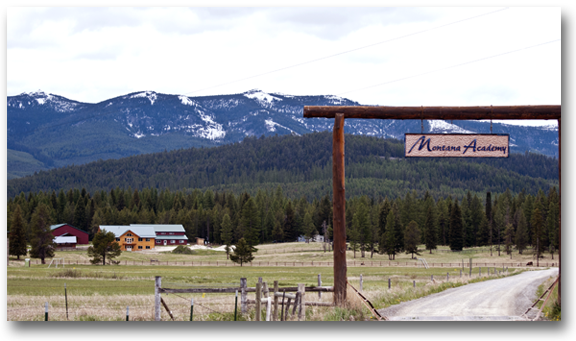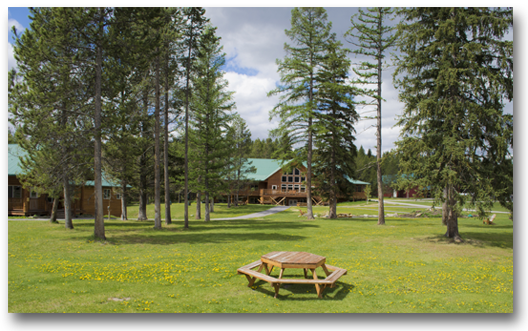| From Strugglingteens.com Visit Reports Marion, MT The Lost Prairie is an amazing valley in Montana, truly hidden from the highway miles down a backcountry dirt road. At a back edge of the large prairie, nestled in the hills of Western Montana sits the campus of Montana Academy, a therapeutic boarding school for troubled teens. Montana Academy is considered among professional independent educational consultants to be one of the best in the network and on my visit, I could completely understand why. Montana Academy was founded in 1997 by John and Carol Santa and John and Rosemary McKinnon. Together the four of them have created a program of healing for bright students who are talented and full of promise, yet struggle with exterior influences that hamper their maturity. Often they are misbehaving at home, struggling in school and/or dropping out of extra-curricular activities, etc. All of their families stand behind them, actively participate, and remain engaged in their children's lives while they are students at Montana Academy. Currently, John McKinnon and John Santa are Co-CEO; Rosemary McKinnon is Director of Admissions and Carol Santa is Director of Education.
We arrived at Montana Academy mid-morning to find a serene campus as the students were currently in class. As we walked up toward the main lodge that houses the administrative offices and the cafeteria, students began changing classes and the thought crossed my mind that this closely resembled a well-established college campus. Students freely walked between buildings throughout the well-maintained grounds and we could hear laughter and the sound of childhood playfulness echo off the surrounding hills. Upon arrival, we met with Rosemary McKinnon, Director of Admissions. Rosemary's expertise in both the student and the family selection is impeccable. Staff knows the type of student they work best with and therefore the screening process is very thorough. Montana Academy is a school where matching the family with the program is as important to the administration as matching the student. The parent's role is critical. Parents must visit the school as part of the interview process before a student is accepted, and they must make a commitment to incorporate program components into their busy schedules. In addition, all students attend a wilderness prior to enrollment to help them settle down and work through any rebellious resistance. After a brief walk through the administration building, we walked around the campus, taking a full tour of all the school buildings and residences. Montana Academy has a full sized multipurpose gymnasium complete with exercise equipment and sound proof music rooms. The school house itself has numerous classrooms for all academic offerings and there is an impressive library/ computer lab on campus as well. The newest building is a full counseling center with separate offices for each of the primary therapists, and conference rooms for group sessions and family workshops. The boys live at one end of the campus in a large dorm-style building, while the girls live all the way at the other end. Both homes were well-kept and organized, but as usual, the girls make their home more personal and decorated. Rosemary discussed with us the different clans of Montana Academy as well as an important component called Sky House. In 2002, in order to avoid the mishap of regression after graduation, Montana Academy implemented a transitional phase to their program. This transition from a protected ranch community back to what students call "the real world," provides ample challenges with the support needed to help them learn to succeed. All Sky House students enroll in college classes at the Community College and take internships or volunteer jobs in the community. Here they learn real life independent living skills. Currently 30 students live in the Boys' and Girls' Sky Houses in the Kalispell community. In addition to excellent program components, Montana Academy also has a complete and professional lineup of staff. The clinical department is led by two clinical directors, Tim Corson, PsyD, and Nick Hong, PhD. Together they oversee all student case files and direct the clinical team. The rest of the clinical team involves both therapists and team leaders. Todd Cardin is the Director of Addiction Prevention and there is an MD and an RN on staff as well. All staff participates in several meetings per week to maintain open communication to keep everyone up to date on each student. Additional staff includes Team Leaders for weekdays and weekends, night staff, kitchen staff, administrative staff and teachers. Most of the teaching staff are Master's Level teachers, certified and well educated in their field of expertise. All of the staff we met were friendly; the students were obviously comfortable around them and yet displayed respect at all times. The students appeared content and well-adjusted to life at the Academy. They were curious about us and at lunch, hung around us to ask us questions, and were eager to let us see who they were. The day we visited, the school newspaper was distributed and all the students were curious to see what the "press" had covered and learn the news about their community. One thing that stuck out in my mind about Montana Academy is the information sharing that happens around the lunchroom. When someone has something to announce or celebrate, like a birthday, the visit of a parent, or a transition to a new level, they address the community and then make their announcement. Then the room erupts with applause and approval from the community. This creates a sense of genuine fellowship and draws visitors into the community as well.
Despite the fact there were 70 students and several adults in the cafeteria, it did not feel crowded or chaotic. The entire lunch gathering was extremely well-organized. Each group sat at their own table and, one group at a time, went to the buffet to serve their lunches. The food was made fresh, tasty with wide variety of healthy options. After meals, students have the opportunity to gather in a great living space adjacent to the lunch room to relax and spend time with their group until their group cleans up their table. We decided it was time to go, and as we walked back to our car at the end of our visit, I remembered why Montana is called Big Sky Country. Even in the mountainous area of the western side of the state the mountains open to reveal the sky and the entire area seems to be larger than life. The location, the staff, and the atmosphere at Montana Academy all promote a place of healing for these kids, allowing them to blossom into the young adults they will soon become. © Copyright 2012 by Woodbury Reports, Inc. |

